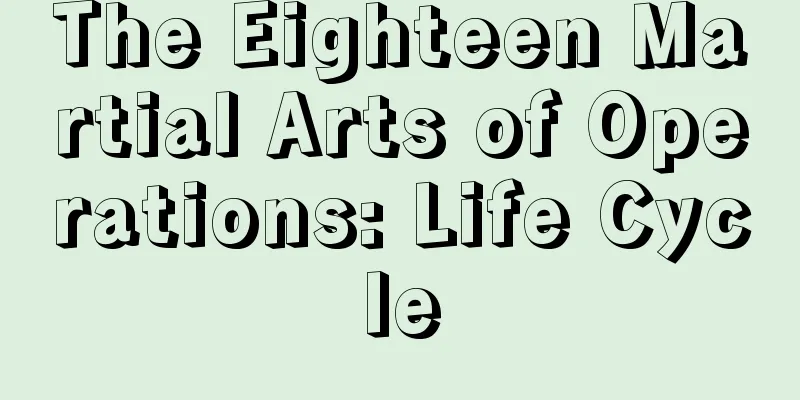"Grain" method = "honey" method? Why do we turn to bees for help in increasing grain production?

|
“Whether on the plains or on the top of the mountains, the infinite scenery is all occupied. After collecting honey from hundreds of flowers, who is working hard for and who is enjoying the sweetness?” This poem “Bee” by Tang Dynasty poet Luo Yin describes the hardworking bees. From ancient times to the present, bees have played an indispensable role in the wonderful stage of nature. They are not only dancers among flowers, but also key messengers of plant reproduction. What is the relationship between humans and bees? Bees are very ancient creatures. They have existed on Earth more than 100 million years ago, earlier than humans have lived on Earth. There is a scene on a European mural: As early as 6,000 to 7,000 years ago, humans collected honey from bees. Bees were originally wild, and it was very difficult for people to obtain honey from wild bees. This was the first stage of human exploration of bees - the discovery and collection of wild honey. Later, humans began to raise bees artificially. my country is the earliest country to artificially use bees. Jiang Qi of the Eastern Han Dynasty was recorded as the "first Chinese beekeeper" and was called the "ancestor of Chinese beekeeping." About 2,000 years ago, in Tianshui, Gansu, Jiang Qi began to collect wild bees, put them in a fixed location in the mountains, and raise them in groups. He not only raised them himself, but also brought many apprentices, with more than 300 at most. This was the second stage of human exploration of bees - the beginning of artificial beekeeping technology. The development of diversified bee products is the third stage of human exploration of bees. Humans continue to improve beehives and technology, increase honey production, and begin to produce royal jelly, bee pollen, etc., to obtain more abundant bee products. The fourth stage of human exploration of bees is the ecological role of bee pollination. Beekeepers have discovered that bees can not only produce honey, but also greatly increase crop yields, maintain plant diversity, and make the ecological environment better. Why bee pollination can improve crop quality Plant pollinators are divided into two categories: wind-pollinated plants and insect-pollinated plants. Among them, wind-pollinated plants are wind-pollinated plants, while insect-pollinated plants are insect-pollinated plants. There are more than 100 kinds of crops planted on a large scale in the world, and 3/4 of them rely on bees and other insects for pollination. Insect-pollinated crops need bees and other insects to pollinate in order to increase their yields. Studies have shown that without bees and other pollinating insects, the average yield of fruit crops in my country would drop by more than 40%, the average yield of vegetable crops would drop by more than 30%, and the average yield of oil crops would drop by more than 20%. Globally, bees make a huge contribution to the three major categories of crops: fruits, vegetables, and oil crops. 9.5% of the world's total food output is contributed by pollinators such as bees. Without pollinators such as bees, hundreds of millions of people around the world would starve or even die. In addition to increasing yields, bee pollination can also significantly improve fruit quality. Take greenhouse tomatoes as an example. If synthetic plant growth regulators (commonly known as chemical hormones) are applied or sprayed on the flowers, tomatoes can also set fruit, but because the fruits have not undergone normal pollination and fertilization, they are poorly developed, resulting in hollow, hard tomatoes and a bland taste. Under the same conditions, tomatoes pollinated by bumblebees have full seeds, rich juice, and a moderate sweet and sour taste, which is what people often say "more tomato-flavored." In addition, the glucose and fructose content in the fruit is significantly increased, while the citric acid and malic acid content is significantly reduced. Therefore, bees and other pollinating insects contribute greatly to agriculture. Einstein once predicted that if bees disappeared from the earth, humans could only survive for four years at most. Therefore, bees are friends of humans and humans cannot live without bees. Why are bees so good at pollination? Whether in agricultural ecosystems or natural ecosystems, pollinating insects are far more than just bees. Diptera flies, Hymenoptera butterflies, moths, and Coleoptera beetles are all pollinating insects, but Hymenoptera bees make the greatest contribution. The following reasons make them stand out from many insects. First, most bee insects have densely covered hairs on their bodies, which facilitate their attachment and carrying of pollen. During their flower-visiting process, that is, flying from one flower to another, they play a role in pollinating plants. Second, some groups, such as many species of Bombus, have excellent sonic pollination characteristics. When they visit the flowers of plants such as Solanaceae, Melastomataceae, and Pedicularis, their wings will emit a "beep beep" high-frequency vibration sound. This sonic pollination behavior is conducive to the release of pollen in specific plants. Third, bees also have a biological characteristic, which is group advantage. For example, a group of oriental honey bees and western honey bees of the genus Apis usually has tens of thousands or even hundreds of thousands of bees living together. The large number of individuals is also a major advantage for pollination of large areas of crops. Fourth, bees have the habit of visiting flowers constantly. Because they have too many offspring, they need a constant supply of fresh pollen and nectar to feed their offspring. Their constant visits to flowers actually improve the efficiency of pollination for plants. Therefore, among all groups of pollinating insects, bees have successfully "broken out of the circle". Why is there so much space for beekeeping in my country? my country is a country with a large agricultural and populous population, with a high proportion of fruits, vegetables and oil crops and high demand. After bees and other pollinating insects pollinate 84 major crops in my country, the economic value of increased production is as high as more than 700 billion yuan, equivalent to 19.1% of my country's total crop output value. From the two figures of 9.5% and 19.1%, we can see that my country's agriculture's dependence on pollinating insects is exactly twice the global average. Because the proportion of insect-pollinated crops in my country's agricultural structure is higher, the Chinese people have a richer variety of food. Bee pollination contributes greatly to agricultural production. It is an important measure to increase agricultural production without occupying arable land or increasing investment. Bees can make honey for beekeepers to earn income by selling honey. Bee pollination contributes even more to the production of crops such as apples, pears, peppers, eggplants, rapeseed, and sunflowers. Protecting bees and other pollinating insects is protecting our food. There is a huge gap in the demand for pollinating bees in my country's agriculture - there are 34 main crops in my country that rely on bees for pollination. To meet the pollination needs of these crops, my country needs to raise more than three times the number of bees. Therefore, there is still a lot of room for beekeeping in my country. What other contributions do bees make? Bees are extremely sensitive to changes in the surrounding environment and are the "little sentinels" of ecological monitoring. The contribution of bees goes far beyond traditional agriculture, and their greatest contribution is to the ecosystem. Globally, there are only more than 100 types of crops, but there are about 350,000 types of flowering plants, of which more than 90% require bees and other insects for pollination. Only by protecting bees and other pollinating insects can plant diversity be enriched and the ecosystem be stable. Therefore, protecting bees is not only about protecting food, but also about protecting our beautiful home, the Earth. Protecting bees and other pollinating insects is not only beneficial to building a strong agricultural country, but is also one of the important measures for us to achieve green mountains and clear waters. (The author An Jiandong is a researcher at the Bee Research Institute of the Chinese Academy of Agricultural Sciences) |
>>: When animals hibernate, how low can their body temperature drop? The answer is unexpected
Recommend
How to write Double Eleven copy to encourage users to place orders?
When it comes to copywriting , the first thing pe...
Once the wound heals, the pain is forgotten, so why do scars remain after the wound heals?
Everyone is familiar with "scar physique&quo...
In the era of Niuqixuetang content, how to build a store with tens of millions of users at low cost
How to easily obtain accurate traffic. Maybe you ...
Putting aside vanity metrics, how do you plan a successful new customer acquisition campaign?
Attracting new customers has always been the goal...
Nanny-level Zhihu marketing strategy!
Zhihu itself is very averse to others doing marke...
Baidu Promotion: The latest version of Baidu information flow advertising product manual!
What is Baidu information flow advertising ? What...
How to carry out user stratification operation with millions of IPs?
This article mainly talks about how million-dolla...
Scientists deliberately sank a ship just to see what would grow on it
There are 3 million shipwrecks quietly lying in t...
The cold wave is really coming! Temperatures in these places may drop by more than 20℃ this week, please take precautions
This weekend just ended, did you feel that summer...
Popular Science | Pineapples are not only edible, but can also be a luxury item?
It's the season for pineapples again. Pineapp...
Neutrinos are "ghosts"? Why go 700 meters underground to catch them?
Recently, according to the Chinese Academy of Sci...
Fifty-three years of dream fulfilled: Mr. Qian Xuesen and the earliest Chinese space station concept
Produced by: Science Popularization China Produce...
Ten principles of user experience
1. System visibility principle Ensure that the co...
User Growth: Why isn’t your user base growing?
The changes of the times and channels will bring ...
APP promotion tips: 100,000 yuan brings 20 million users
Last time, I wrote an article titled "How to...









